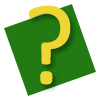Welcome to the website of formal languages and compilers.
Course Formal languages and compilers for Applied Computer Science is lectured by dr inż. Radoslaw Klimek.
Page takes part into a competition called „Notes on the Internet”,so please vote .
Navigation
Page is divided into theoretical and practical part.
In the theoretical part,there are three sections:basic information on the issues of formal languages,automatons and compilers,as well as an additional module BPMN,which broadens the range of material about the content of the laboratories.
In the practical part,there are two types of exercises:find language and find grammar.
Notation
Definitions
Language is an organized system of signs,symbols and rules.
On the green fields there are the most important definitions.
Interesting things
Interesting…
For every NFA adeterministic finite state machine (DFA) can be found that accepts the same language. Therefore it is possible to convert an existing NFA into a DFA for the purpose of implementing a (perhaps) simpler machine. This can be performed using the powerset construction,which may lead to an exponential rise in the number of necessary states.
On the yellow fields there are interesting information or simply curiosity.
Examples
Examples are underlined.
Example:
V={0,1,2,3,4,5,6,7,8,9}
V ={a,b,b}
Questions
An the end of each part there are simple questions,viewing the understanidn of presented content
 Are we able to define all the sentences correctly for a natural language?
Are we able to define all the sentences correctly for a natural language?- Is it possible to define a language using the words contained in it?
- Does every sentence have only one possible notation in the BNF?
If you do not know the answer to these questions,read again the above content.
Let’s learn and have fun!





